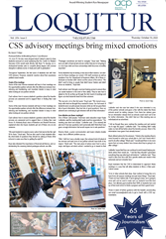Researchers at the Harvard School of Public Health have found that levels of nicotine in cigarettes have increased over a seven-year period from 1998-2005. The state of Massachusetts requires all cigarette manufactures to file annual reports on nicotine yield and cigarette designs related to nicotine delivery.
The study, conduct by the Tobacco Control Research Program at HSPH, found that the smoke nicotine yield levels have increased 11 percent, an average of 1.6 percent a year 1998-2005. This was found to be true throughout the major categories of cigarettes; mentholated vs. non-mentholated and full flavor vs. light, medium or ultralight.
“Our findings call into serious question whether the tobacco industry has changed at all in its pursuit of addicting smokers since signing the Master Settlement Agreement of 1998 with the State Attorney General,” said the program’s director Gregory Connolly, a professor of the practice of public health.
A combination of an increase in nicotine concentration and reduction in the burn rate of cigarettes has contributed to the increase in the smoke nicotine levels. By changing the design of the cigarette, manufacturers ensure that the smokers are able to extract enough nicotine to sustain their habit.
In a ruling by US District Court for the District of Columbia, Judge Gladys Kessler wrote in her opinion that tobacco companies “can and do control the level of nicotine delivered in order to create and sustain addiction” and further, that the “goal to ensure that their products deliver sufficient nicotine to create and sustain addiction influences their selection and combination of design parameters.”
It was the D.C. District Court ruling that highlighted the need to watch more carefully the delivery method of nicotine. “Cigarettes are finely-tuned drug delivery devices, designed to perpetuate a tobacco pandemic,” Howard Koh, the former commissioner of public health for the Commonwealth of Massachusetts, said.
The findings by HSPH were limited to cigarettes. It does not take in to account smokeless tobacco and its design that contribute nicotine delivery. The HSPH suggested to the MDPH that they expand their reporting requirements to include smokeless tobacco as well as more information about the cigarette itself.


